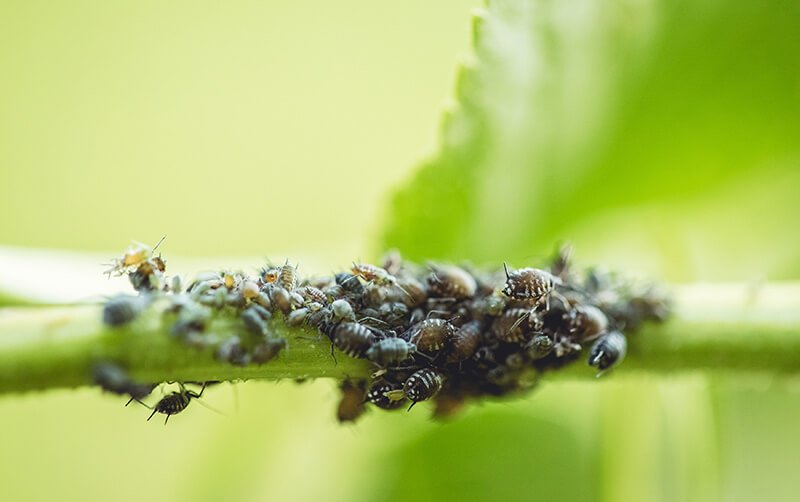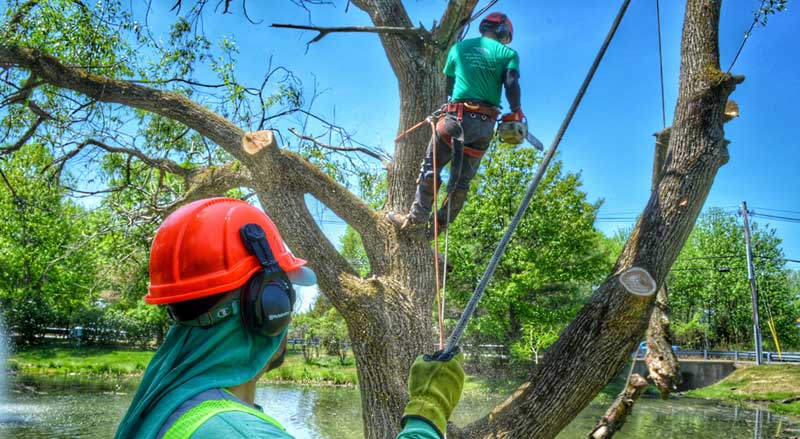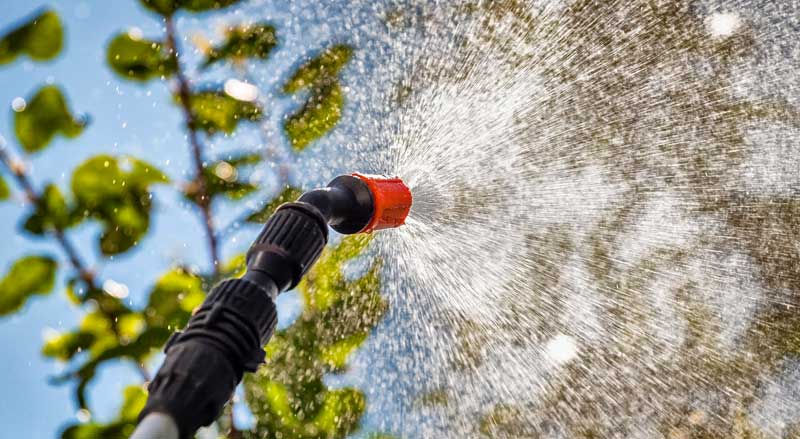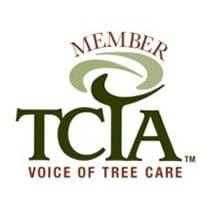No one likes uninvited guests, especially ones that devour all your leaves and plants. Ask any landscaper and they’ll tell you aphids make horrible guests. Seeing those tiny green bugs pop up in your greenery could become disastrous quickly. But there are ways to combat an aphid infection, especially if you notice it early enough. Here’s everything you need to know.
What are Aphids?
Aphids are small, soft-bodied insects that feed on plant sap and nutrients. The color of aphids varies from green, yellow, white, and pink to brown depending on their species. They are typically wingless with pear-shaped bodies and long antennae.
Seeing a mild number of aphids on your plants shouldn’t cause alarm. Most healthy trees and plants can handle a few of these pests. However, aphid colonies can multiply quickly. An infestation can wreak havoc throughout your landscape if not dealt with immediately.
What Are the Signs of an Aphid Infection?
With the number of known insects surpassing the entire world’s population by trillions, you may be wondering how to spot aphids over non-harmful garden bugs.
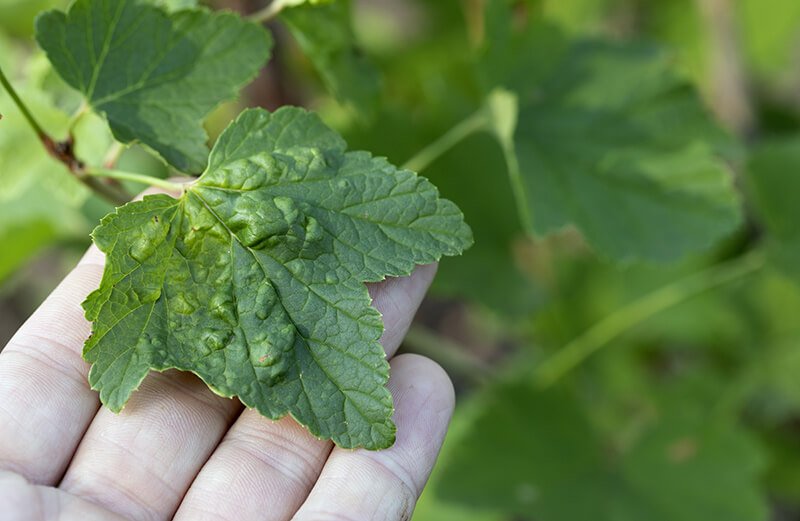
• Aphids are almost always located on the leaves of your plants. They’re small, but not too small to be seen by the human eye. If you see small, transparent bugs crawling on your leaves, they could be aphids.
• Leaves are wilting or bubbling. The handiwork of aphids is similarly obvious, with leaves that wilt or seem distorted and bubbling. This is caused by the eating of the plant’s sap and nutrients.
• Yellow or dying leaves. Leaves may die altogether or simply turn yellow when affected by aphids. Aphids especially like to cluster on new leaves on new growth stems.
It’s a good idea to regularly look for aphids or other pests on plants and trees. Staying on top of preventative care for your landscape will keep infestations at bay.
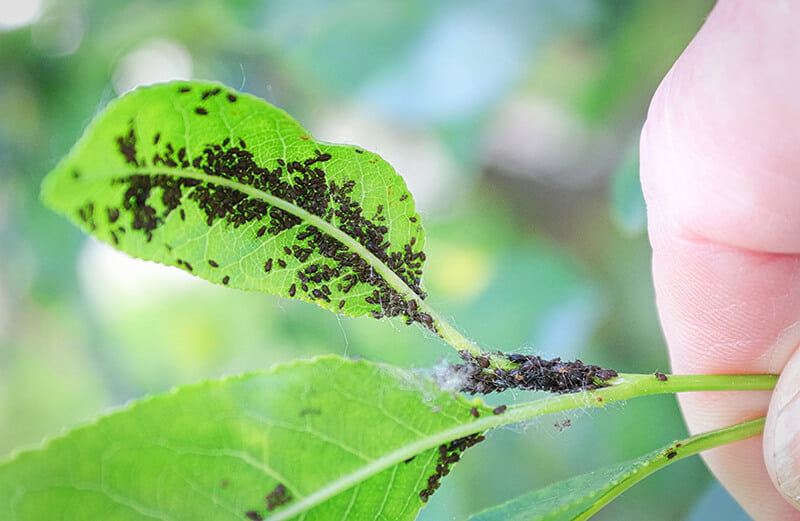
How to Remove Aphids
Finding an infestation is never fun but there are helpful and effective ways to get your unwanted guests out.
Growing Aphid Repellants
Garlic, chives, onion, and catnip are all-natural aphid repellants. Growing them around your garden can help you avoid this pesky problem altogether. These plant choices will stop new aphids and other insects from nesting in your plants. However, this is a better option for preventative care rather than treating an infestation.
Removing Aphids by Hand
If you only have a small infestation, one of the fastest and easiest methods is to remove them by hand. It may be tedious, but because they are easily seen up close, you should be able to remove them all with just your gloves and a garbage bag.
Aphids are a serious pest, but if you continue to remove them by hand, the damage will remain minimized. Luckily, they aren’t like tomato worms — which can cause a lot of damage even if there’s just one.
Using Soap and Water Against Aphids
Another great solution for small infestations is using soap and water tincture. This is ideal for focused aphid removal, especially on more delicate plants. However, because you need to wipe the soap and water tincture on each leaf, this option is time-consuming.
It works best for a single plant that has an infestation. If your garden is overrun, you’ll need to try a more powerful treatment.
Spraying Aphids with Water
If there are too many to get by hand, you can try a hose. A spray hose has the power to remove more aphids at once if you have a larger infestation on your hands. Make sure the hose is on a pressure high enough to knock the insects off, but low enough so it doesn’t damage the plants. Use a hose to spray your plants off daily to keep up the preventative care.
Spraying Neem Oil
Neem oil is like the soap and water option, but there’s a major advantage. You can spray neem oil throughout your garden before aphids even get there. It will deter aphids from settling at all, as well as many other nutrient-taking pests.
The downside to neem oil tends to be the lingering unpleasant smell. If the fragrance gets too overwhelming, try diluting it with water and make it a mixture.
Introducing Bugs
Did you know Ladybugs are a natural predator for aphids? Introducing some ladybugs into your garden can improve the health of plants dramatically. And who doesn’t enjoy a garden full of colorful ladybugs?
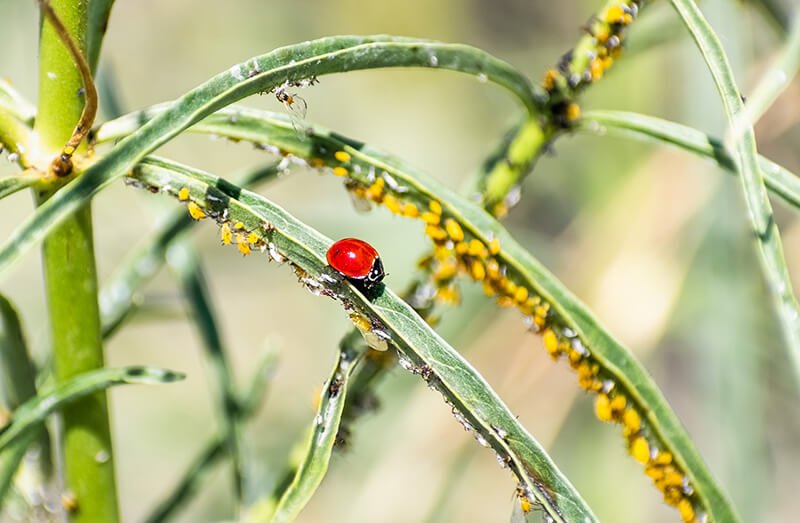
You can order ladybugs online but make sure they are native to your area and “true” ladybugs. If they aren’t ladybugs, you could be introducing another problem to your landscape.
Pruning the Plants
Pruning allows your plants to regrow quicker by focusing energy on recovering salvageable areas. It removes the dead and infected areas and gives the remaining parts of the plant the ability to thrive.
If your infestation gets out of control and takes over your plants, contact a tree service company. They can help begin to minimize the infestation and remove aphids from your property.
Properly removing aphids increases the likelihood they won’t harm your remaining trees. Often, it’s better to entirely remove plants or damaged areas of trees.
Aphids can be very difficult to get rid of in a landscape. They occur naturally but can be disastrous to trees and plants.
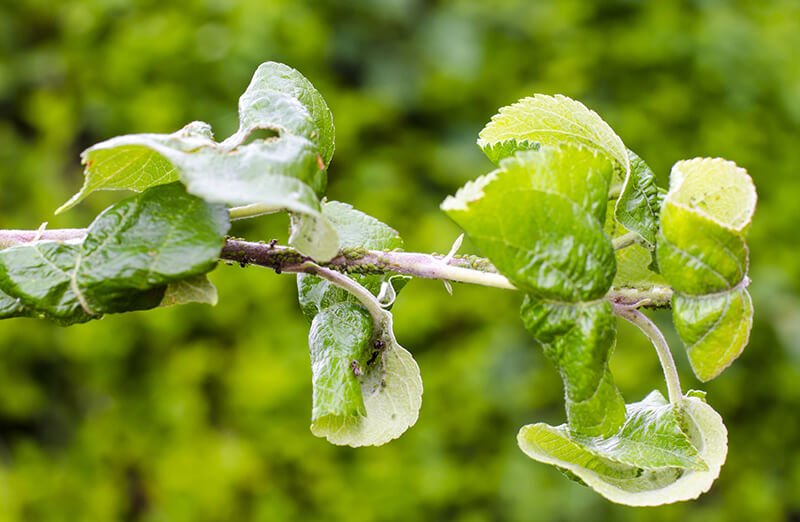
They typically cause wilting and can ultimately lead to the death of a landscape. But, with the proper landscaping care, you can defeat these silent pests and keep your garden healthy.
For more tips for aphid pest control, contact Trees Unlimited NJ — your tree service and tree pruning company in NJ.

